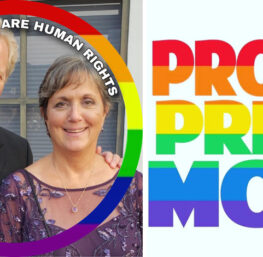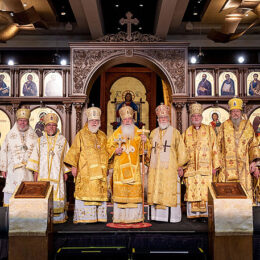5/24/2010 – Jennifer Marshall –
It’s hard to imagine the unemployment rate rising steeply for decades without public outcry. But that’s exactly what’s happened in the case of another significant indicator: the unwed birth rate.
Hardly anyone noticed this spring when new data showed 40% of all births are to unmarried mothers. That’s way up from 7% in the mid-1960s, when a young White House appointee named Daniel Patrick Moynihan tried to sound the alarm.
Moynihan, then an assistant Labor secretary in the Johnson administration, issued a report in 1965 warning that disintegration of the black family in America threatened Johnson’s War on Poverty.
“(D)ollars of income, standards of living, and years of education deceive. … The fundamental problem is that of family structure. (The black) family in the urban ghettos is crumbling. So long as this situation persists, the cycle of poverty and disadvantage will continue to repeat itself.”
Regrettably, history proved Moynihan — the future Democratic senator from New York — to be correct. When the Moynihan Report was released, one out of four black children was born to an unwed mother. Now, a staggering three out of four black children are born outside marriage.
That fact will cast a long shadow down the course of a child’s life. As one prominent black author wrote in 2006:
“(C)hildren living with single mothers are five times more likely to be poor than children in two-parent households. Children in single-parent homes are also more likely to drop out of school and become teen parents, even when income is factored out. And the evidence suggests that on average, children who live with their biological mother and father do better than those who live in stepfamilies or with cohabiting partners.”
About two-thirds of poor children live in single-parent homes. Government spends $300 billion annually to assist low-income single parents.
But if poor single mothers married the fathers of their children, nearly two-thirds could escape poverty immediately. About half of unwed mothers are cohabiting with the father at the time of birth, and three out of four are in a romantic relationship with the father. Not only are most of these men employed when the child is born, research shows that more than half earn enough to be the breadwinner and keep a family out of poverty.
Yet discussions of poverty rarely address the collapse of marriage. Two generations of children have paid the price for adults ignoring Moynihan’s prophecy.
Avoiding the central problem, many focused on births to teen girls. Indeed, release of the alarming new data that 40% of all children and 72% of black children are born outside marriage produced headlines concentrating on teen births.
However, only about one in seven out-of-wedlock births is to a girl younger than 18. The typical mother of a child born outside marriage is in her early 20s and without much income or education. In other words, she’s not Murphy Brown.
Some have avoided confronting the collapse of marriage for fear of stigmatizing fatherless children. After all, these kids are the innocent victims of the marital chaos.
But children are also already painfully aware of the absence of fathers, points out Dr. Wade Horn, who oversaw programs for children and families at the U.S. Department of Health and Human Services. Children have a natural “father hunger,” Horn says. When adults pretend nothing’s wrong when Daddy is gone, it tells children their longing is the problem, compounding their hurt and confusion.
To ignore the collapse of marriage is heartless. For the sake of children, especially, we should muster all our ingenuity and resources to restore a culture of marriage in America.
President Barack Obama clearly recognizes the significance of marriage for the welfare of children. The quote cited earlier is from his 2006 book “The Audacity of Hope.”
In the same passage, Obama concludes: “In light of these facts, policies that strengthen marriage for those who choose it and that discourage unintended births outside of marriage are sensible goals to pursue.”
But rather than backing such policies, the president’s 2011 budget would eliminate the one program dedicated to encouraging healthy marriage. In its place would be a program promoting a notion of “fatherhood” that doesn’t involve the father being married or in the home.
Sadly, President Obama’s action is yet another way to avoid addressing the collapse of marriage and its consequences.
The facts speak for themselves. It’s time more policy-makers noticed what the facts are saying.
Jennifer A. Marshall is director of the DeVos Center for Religion and Civil Society at The Heritage Foundation and author of “Now and Not Yet: Making Sense of Single Life in the Twenty-First Century.”
HT: TwinCities.com



